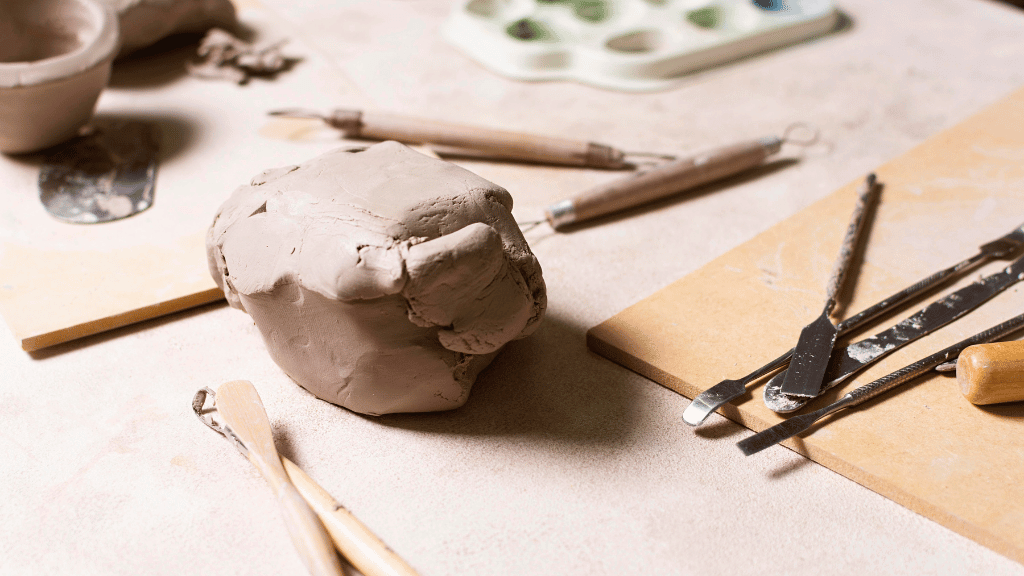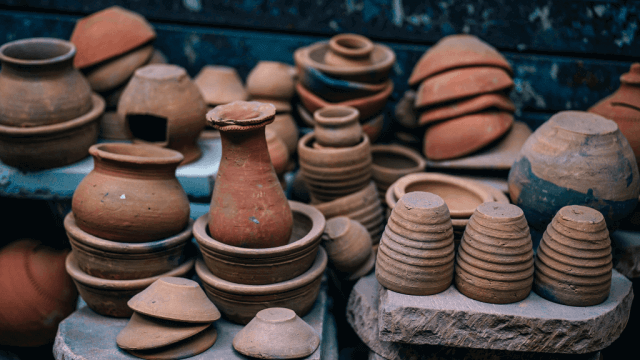Pottery slips typically range in price from $5 to $30 per pint, depending on factors such as brand, color, and product quality.
Prices may vary across suppliers and geographic locations.
Understanding Pottery Slips
Pottery slips are a type of liquid clay mixture used to decorate, strengthen, or change the texture of ceramic pieces.
They can be applied at various stages of the pottery-making process, offering a wide range of creative possibilities.
Factors Affecting Pottery Slip Costs
Brand
Different brands offer pottery slips with varying characteristics and quality, which can impact the price range.
Established brands usually offer higher-quality slips at a higher cost, while lesser-known or new brands could provide more affordable options.
Color
The color of the slip can also affect the price, as some pigments may be more expensive to produce than others.
Bright or unique colors can increase the price, while more common shades may be lower in cost.
Product Quality
Higher-quality slips usually have a longer shelf life, better adherence, and more vibrant colors.
These attributes can result in increased costs compared to more affordable, lower-quality alternatives.
Average Pottery Slip Prices
In general, pottery costs associated with slips range from $5 to $30 per pint.
This price range accommodates a wide variety of preferences when it comes to brand, color, and product quality.
Budget-conscious consumers may opt for more affordable slips, while pottery enthusiasts or professionals might be willing to invest in higher-quality products to enhance their creations.
Where to Buy Pottery Slips
Pottery slips can be purchased from a variety of suppliers, including local pottery supply stores, online retailers, and specialized pottery or ceramic shops.
You may find variance in prices across these sources, so it’s recommended to compare prices and availability before making a purchase.
Creating Your Own Pottery Slips
If you’re interested in reducing pottery costs, consider making your own pottery slips.
You can mix powdered clay, water, and colorant to create your desired consistency and color.
This option allows for more customization and cost savings, especially for those who produce large quantities of pottery.
Storing and Extending Slips
Proper storage is essential to ensure the longevity of your pottery slips.
Slips should be stored in airtight containers when not in use to prevent them from thickening or drying out.
If you notice your slip becoming too thick, you can add small amounts of water to thin it to the desired consistency.
By extending the usability of slips, you can also reduce overall pottery costs.
Techniques for Applying Pottery Slips
Different techniques allow artists to express their creativity with slips.
Some popular methods include:
- Brushing: Applying slips with a brush allows for precision in creating intricate patterns and designs.
- Slip Trailing: Using a slip trailer, a tool that resembles a small squeeze bottle, can create raised lines and dots on pottery surfaces.
- Marbling: Blending multiple slips creates a marbled appearance, and it’s done by pouring and swirling together different colored slips, then applying them on the pottery surface.
- Engobe: A combination of engobe, a clay-based mixture, and slip is applied to the pottery to create contrasting colors or decorative patterns.
Common Pottery Slip Mistakes
When working with pottery slips, be mindful of these common mistakes to create a smooth and cohesive appearance:
- Improper consistency: The slip must be appropriately mixed to adhere to the pottery surface adequately. If the slip is too thick or too thin, it could result in an uneven application.
- Overworking: It is essential to work quickly and efficiently when applying slips. Overworking the surface may cause problems in drying or sticking to the pottery.
- Mismatched drying times: When using multiple slips on a single piece of pottery, ensure they have similar drying times. Incompatibility may lead to cracking or other issues.
FAQ Section
Here are some frequently asked questions often encountered by readers when it comes to pottery slips and their costs.
What are the main components of pottery slips?
Pottery slips primarily consist of a mixture of powdered clay, water, and colorant, which are combined to achieve the desired consistency and color for decorating ceramics.
Can pottery slips be purchased in bulk?
Yes, you can often purchase pottery slips in bulk from various suppliers, which could potentially lower the overall pottery costs.
Keep in mind that proper storage and management are crucial to maintain the slip’s quality and shelf life.
What makes a pottery slip high-quality?
A high-quality pottery slip generally has a longer shelf life, better adherence to ceramics, and more vibrant colors.
These attributes often result in a higher price compared to lower-quality slips.
Can you apply multiple layers of pottery slip?
Yes, you can apply multiple layers of pottery slip to create depth, texture, and intricate designs.
However, be cautious of slip compatibility and drying times to avoid potential issues like cracking or difficulty in adhesion.
Is it difficult to create your own pottery slips?
Creating your own pottery slips can be relatively easy, as it involves mixing powdered clay, water, and colorant to achieve the desired consistency and color.
Making your own slips not only allows for more customization but can also be a more cost-effective option for those producing large quantities of pottery.











